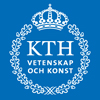 |
SF2724: Topics in mathematics IV: Applied topology, Vår 2011 |
Course content:
Contact:
In topology one uses homology and cohomology theories to translate geometrical properties of spaces into algebraic statements. They give computable ways of finding algebraic characteristics of spaces, such as the number of components or the number of "holes" of different types. In this course we will study two specific cohomology theories: K-theory and De Rham cohomology. They have both the advantage of being elementary, and can be studied with no particular previous knowledge (except the prerequisites stated below). We will see how these theories are used to compute invariants of spaces, and we will try to give several applications. The aim of the first part on K-theory is to present a proof of the periodicity theorem for complex vector bundles. Vector bundles have been an important source of invariants for topological spaces. During the last 50 years a big part of algebraic topology has been motivated and inspired by understanding vector bundles and related invariants. The periodicity theorem has been the key reason why these invariants have been so useful. Our aim is not only to learn about vector bundles and necessary background but also to learn how to read a research article. This part of the course is going to be based on an article of M. Atiyah and R. Bott "On the periodicity theorem for complex vector bundles", Acta Math. 112 1964, 229–247. In the second part of the course we study De Rham cohomology. This theory takes it starting point from classical methods of vector analysis. In vector analysis we learn that a conservative vector field has no rotation, but the converse holds only if the vector field is defined on a simply connected domain. This observation can be generalized to a full theory where the vector fields are replaced by differential forms and the div, grad, and rot operators find their natural common interpretation as the d-operator. The resulting De Rham cohomology theory gives a way of computing the numbers of holes of different dimensions for open subsets of R^n, or more generally for smooth manifolds. Using De Rham cohomology we will study the degree of maps, linking numbers of curves, and the index of vector fields. The subject of characteristic classes connects the vector bundles of the first part with De Rham cohomology. In this part of the course we use material from the book "From Calculus to Cohomology" by I. Madsen and J. Tornehave. Prerequisites: SF2729 Groups and Rings, and SF2713 Foundations of Analysis (or equivalent courses). |
||